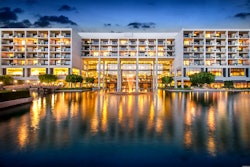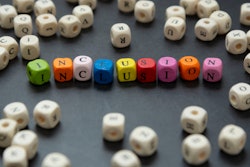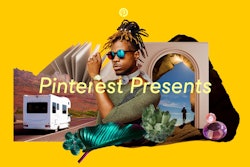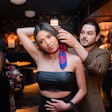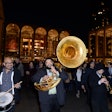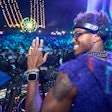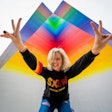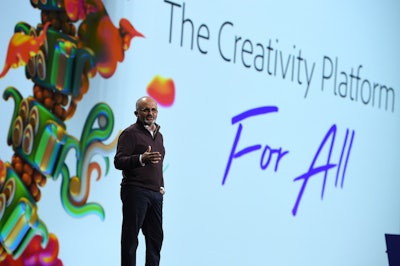
In the world of live events, software developer Adobe is most known for its massive annual conference, Adobe Max. Taking place from October 15 to 17 at the Los Angeles Convention Center this year, the self-described “creativity conference” drew over 12,000 graphic designers, illustrators, photographers, and more from around the world.
In addition to more than 300 sessions and workshops with celebrities including Questlove, Ron Howard, and Tiffany Haddish, this year's event saw an increased focus on accessibility and inclusivity, with a number of new steps taken to accommodate both physical limitations as well as diversity in race, gender, sexuality, and more.
In late 2017, Adobe promoted Seattle-based Matt May to head of inclusive design, a role that works on Adobe products and on its live events. BizBash spoke with May both about the changes at this year's Adobe Max, as well as ways all events can improve in the future. Here are his suggestions.
1. Ask every attendee exactly what they need.
The Adobe Max website had a clear F.A.Q. section that detailed the steps the conference was taking towards inclusivity and accessibility. Attendees also had a chance to discuss any additional requirements while registering.
“Asking that question and expressing your willingness to accommodate is so important,” explains May. “You are inviting people to say, ‘Listen, this is what I want and need.’ The more detailed you can be in the registration process, the better the outcomes are going to be for everybody that's involved.”
Anyone who marked down a special requirement received a personal phone call from the Adobe team, who then worked with the attendee to provide what was needed: everything from a personal sign language interpreter to a mobility device to a service animal to special transportation to additional events, some of which were up to two miles away.
2. Remember that not everyone needs the same thing or learns the same way.
One of the main steps taken at Adobe Max this year was to add live captioning to all keynotes and breakout sessions. Captioners worked both remotely and in the room to provide live transcription that was displayed on large screens. In all, almost 500 hours of captions were captured and displayed throughout the conference.
But captions aren’t always ideal for all guests, says May. “If American Sign Language is your native language, words on a screen are not what you will tend to prefer,” he explains. So, guests who requested it were still provided with personal sign language interpreters.
May says that the captioning was not intended to be a cost-saving measure—it was more about providing options to attendees. Some guests, especially those for whom English is a second language, might prefer captions so they can follow along.
“If you’re conversive but not fluent in English, captions are tremendously useful because if you missed something, you can get it brought back to you in a second or two,” he notes. “I’ve used this at conferences that were in French or Spanish—I can get by a little, but when the words are right on the screen, I can follow along.”
3. Work with the venue and presenters before the event begins.
May says that event planners and venues generally understand the requirements around wheelchair access and ingress and egress, he just wants to add new layers on top of that and think about what else can be done in the future.
Part of that is working with speakers on their presentations and visual assets, and establishing a style guide for things like proper font sizes and color contrasts. He notes that there are a lot of variables for presentations—you don’t know how bright the room’s projector will be, for example. That can greatly affect the legibility of your visual assets.
“Occasionally I'll be at an event and see a person that didn't take that into account,” he says. “If their slides are unreadable to me, and my vision is corrected to 20/20, how much worse would it be if somebody has low vision and is sitting in the back? Those are definitely things that we try to bring up with the presenters and the conference staff to make sure that we're making things as useful as possible."
May also reminds presenters to explain what’s on their screens, rather than using language like, “As you can see on this chart.” If someone can’t see the screen the presenter is gesturing to they’re being left behind.
4. Inclusivity is not just about accommodating physical disabilities.
May's job is also about creating welcoming spaces for people of all races, genders, sexualities, and economic statuses. A big part of that is establishing a code of conduct; Adobe Max displays it prominently on the registration website.
“How do you ensure that attendees are not going to be harassed or assaulted?” he asks. “That is a really important aspect of inclusion, especially with the code of conduct debate that’s going on. People need to feel safe in spaces that we make for them.”
The event also had gender-neutral restrooms and private rooms for breastfeeding. May also cites a recent event he went to that handed out buttons that listed attendees’ preferred gender. “Buttons are cheap. They’re easy,” he says. “So much of this is stuff we can do for free if we just think about it beforehand.”
5. Work with your team to make these discussions commonplace.
May hopes that in the future, the event industry can establish some clear standards for inclusivity.
“Across the industry, there should be some concept of, ‘This is what we expect a venue to deliver to us, these are the responsibilities that organizers are taking on to make sure these things are accounted for,'” he suggests. “That way, we don't end up having to start the playbook from scratch every time that we work with a new venue or on a new event.”
6. Keep an eye on how emerging technology can help.
Working at Adobe, May gets a first-hand look at how technology can improve these issues in the future.
“We’re reaching the point where technology is almost, but not quite, there for things like captioning—we still need to have humans to do the captioning work,” he says, noting that while automatic machine captioning isn’t quite ready for primetime, he thinks it will be widespread within a matter of years. “[At Adobe,] we're always thinking about what new technologies are coming along that will help us build a more inclusive space.”
May also hopes that in the future, captions will be automatically translated into an attendee's preferred language.
“From where I sit, I’m always looking at what we can do technically and what we can do socially to make sure everybody walks away happy,” he says.




